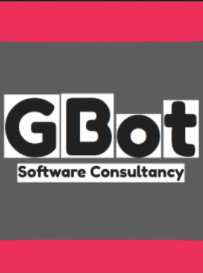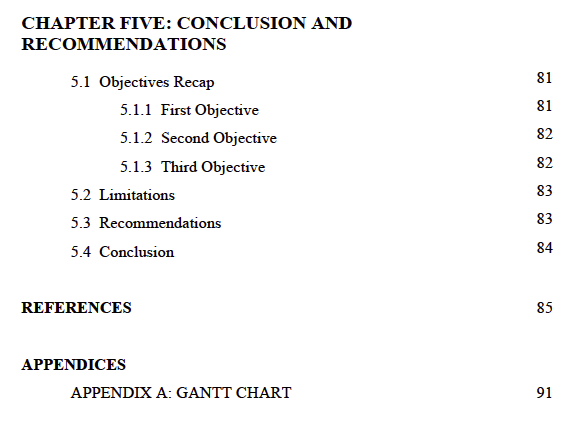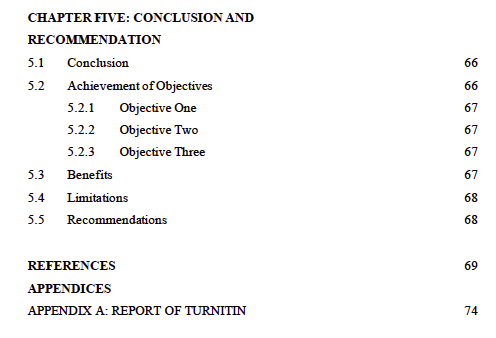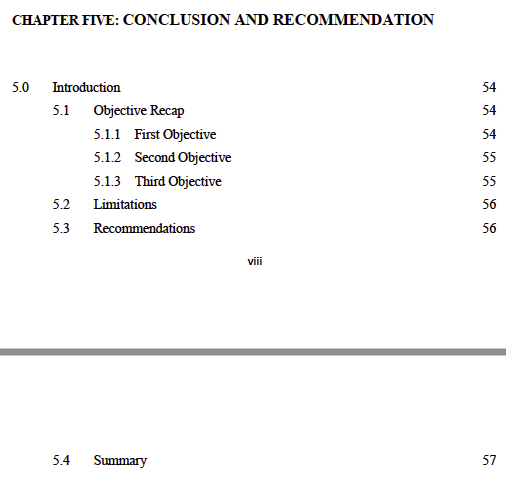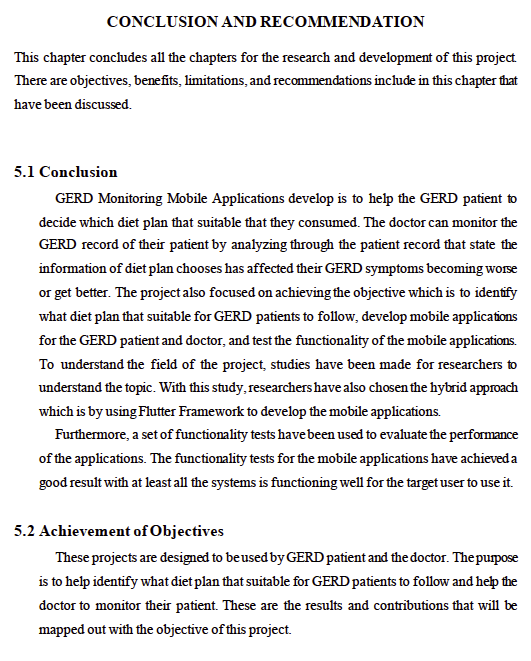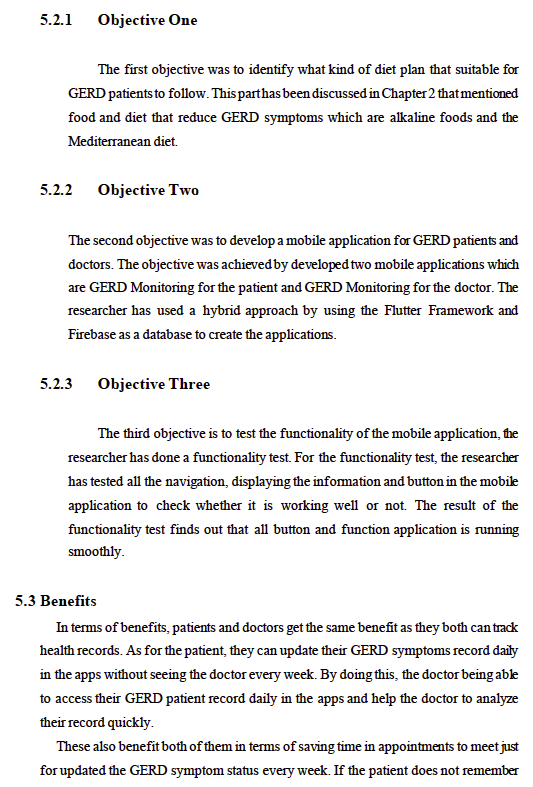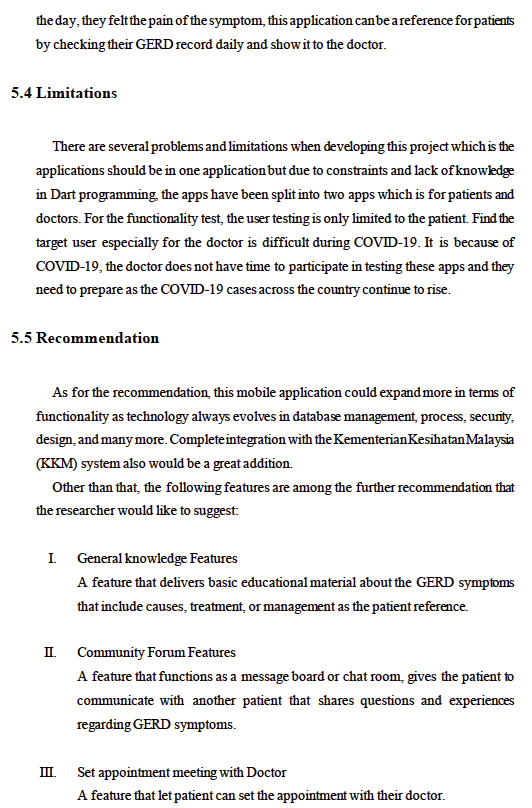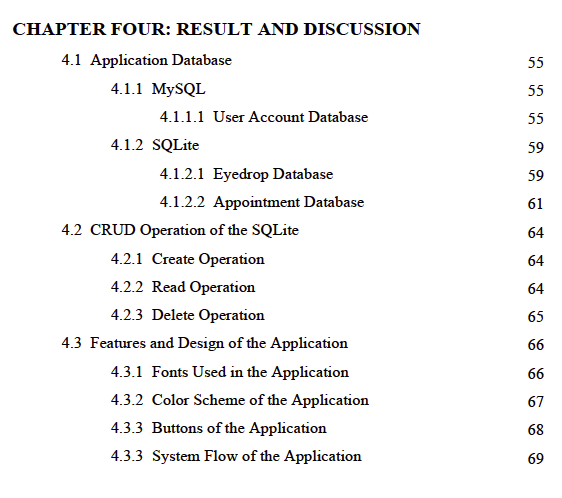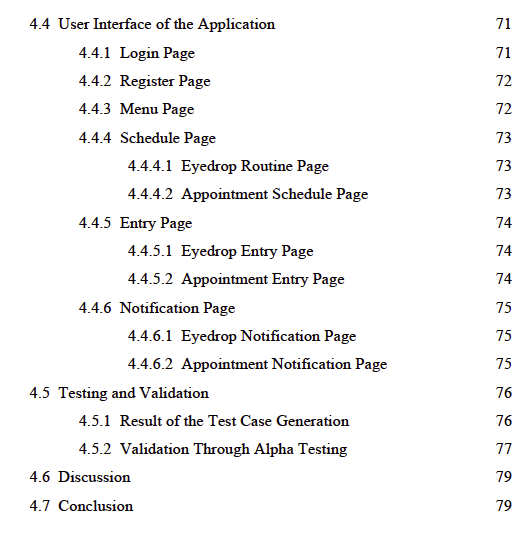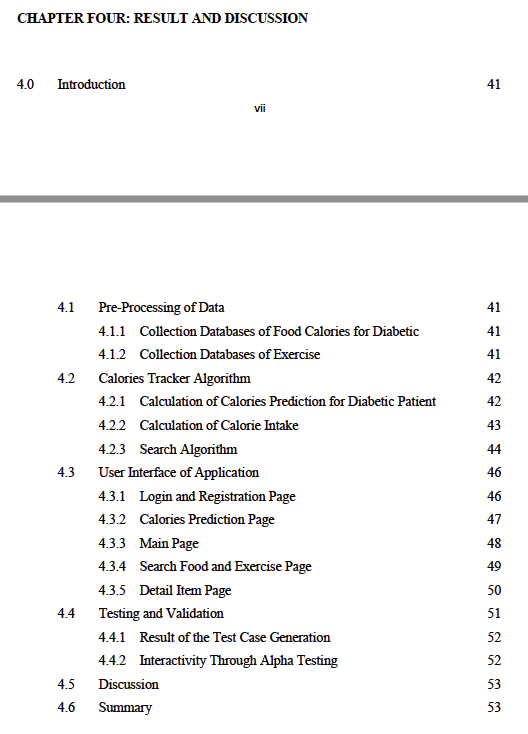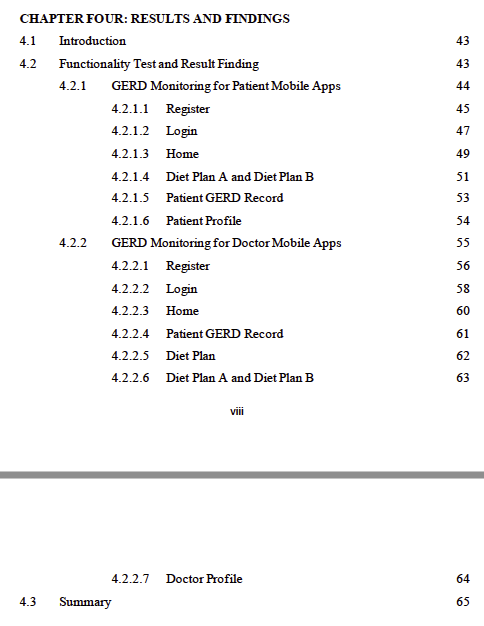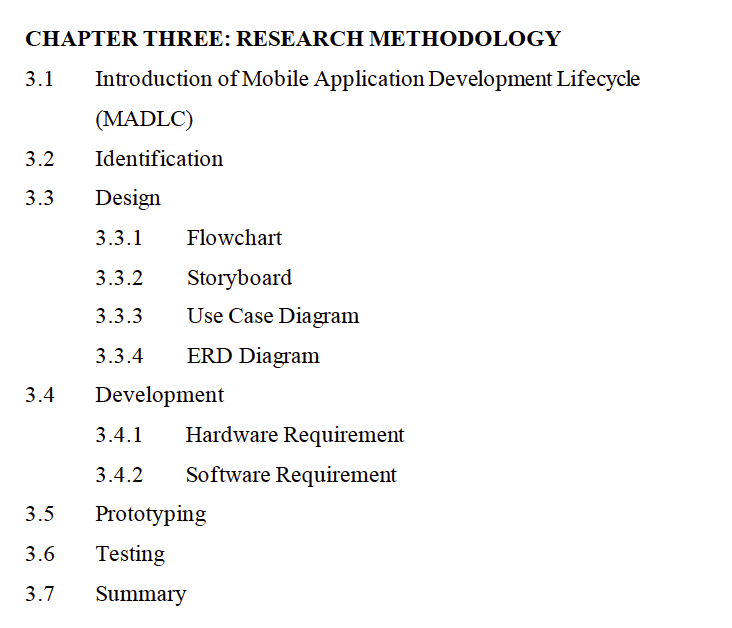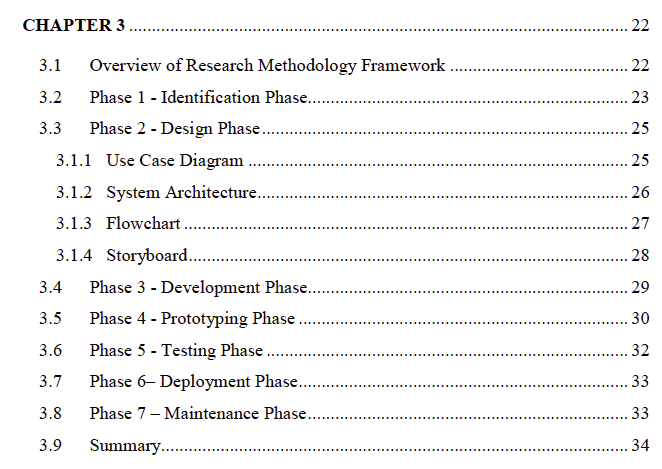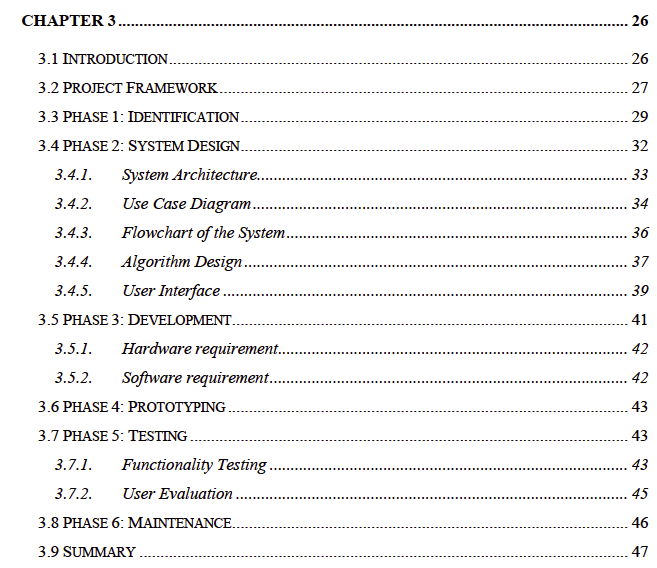As in any kind of writing, it is necessary to present the background or the scenario or the current situation relating to the issue or the focus of the research. In a story, it is known as scene-setting presented in prose so the reader will understand what the current situation is. This section also explains why it is necessary to conduct research in order to address the issue, the step of indicating a gap. The background can be started with:
- An existing situation that is common knowledge or which has been researched into earlier.
- The present study attempts to build on or even counter the earlier findings.
- A statement relating to something ordinary with reference to our everyday lives.
The opening line in the background of the study is usually the “kicker” of the writing process just as the whole introduction chapter is the jumpstart of the thesis.
Please give at least 5 citations to support your introduction. Your reference doesn’t have to be the latest because maybe some references refer to the basic fundamental or highlight certain past researchers.
Title: Introduction for chapter 1
This chapter discusses the research background that drives this project and the reasons why it is important. Following an explanation of the problem statement, which clarifies the problem to be solved, comes the study’s scope, which establishes the project’s main objectives. The research questions and objectives are then presented, which briefly outline the project’s progression and finally provide an idea of what to anticipate from this study. At the end of this chapter, the study’s importance for this project will also be discussed.
Title: Gestational diabetes mellitus prediction
Gestational diabetes mellitus is a condition where a woman has a high blood sugar level during their pregnancy. Approximately 87.5% of all diabetes in pregnancy, is gestational diabetes mellitus (GDM) (Lefkovits et al., 2019). There are two classes of gestational diabetes which are type 1 and type 2. Women with type 1 can manage it through diet and exercise and those who have type 2 need to take insulin or other medications. GDM usually happens in the second half of pregnancy. Usually, the time range where the doctor will check for GDM is between week 24 and week 28. But if you are at high risk the doctor will check sooner. (Common knowledge about the topic selected)
Diagnosing women with GDM is crucial during early pregnancy to reduce maternal and neonatal morbidity. Based on the current screening guidelines, there will be two tests to diagnose GDM. According to Iftikhar et al. (2020), the first diagnostic consist of a 50 g of oral glucose challenge test performed after 24 weeks gestation, followed by a second diagnostic test guideline. If the patient is at high risk but the test results are normal, the doctor might test again later in pregnancy to get the confirmation. This will require more time to do the screening again. A lot of research in cohort studies has been made using predicting modeling techniques where the patients are followed up routinely. (Describe more on common knowledge and focus on a certain area)
However, according to Qiu et al. (2017), the studies on risk factor analysis did not consider the details of gestational trimesters. The risks for GDM can be predicted in the first trimester of pregnancy according to the mix of maternal demographic and characteristics.
If we can predict disease earlier, we can improve health and improve outcomes (Sundeep Bahn, 2017). The machine learning algorithm is one of the AI techniques that are capable to predict the percentage of a pregnant woman who diagnosed with gestational diabetes mellitus earlier. Machine learning methods application can give worthy information and prediction on health risks based on the electronic health record dataset. According to Shinde and Rajeswari (2018), the recent machine learning algorithms progress in designing and applying it on Electronic Health Record (EHR) dataset has given positive results. Machine Learning algorithms facilitate the development of intelligence into a machine. Hence, it can perform better in the future using the experience that has been learned. In this research, the early prediction of GDM will be made based on multiple common risk factors of the pregnant woman. (Highlight the importance of this research)
Title: Fostering Malay Culture Into Digital Storytelling Game
Malaysia is in the Asia continent and one of the Southeast Asia countries that is famously known for its diversity. The population of Malaysia includes the Malays, Chinese, Indians and other indigenous bumiputra. Malaysia culture is diverse because of the mix of external cultures during the growth and establishment of Malaysia as a nation (Muhamad et al., 2023). Malay culture symbolizes the social and cultural aspect that is characteristically Malay (Ali, 2022). There are many ways of promoting culture. For example, Koreans use digital storytelling which is through Korean drama to promote their culture. People progressively learn about Korean culture and become interested with anything related to Korean (Pha & Lhe, 2022).
Storytelling is the sharing of values, knowledge and experiences. There are many types of storytelling which are oral storytelling and digital storytelling. Digital storytelling is the use of computer based tools and technology to present ideas or tell stories.Digital storytelling includes the combination of multiple multimedia components such as images, audio, text and animation (Choo et al., 2020). It can create an engaging experience for the youth. Furthermore, incorporating interactive experience in the storytelling such as gaming concepts are possible. Game in general is a type of structured play or activity that is freely controlled by the players for their own entertainment. In research, adding narrative components and storytelling to gamified environments can enhance students’ learning outcomes. (Jarrah et al., 2024). Although Malaysia has many vibrant cultures, the world has moved on and increasingly developed with new technologies which has made it a challenge for the younger generation to stay connected with the heritage especially for Malay culture.
Title: Gamified Science Learning: Engaging Primary School Students Through Interactive Simulations Game
In this era of modernisation, technology has become an important part of the life of every society. These days, technology has developed and improved to make it simpler to utilize in daily life and at business. It cannot be denied that technology is now growing rapidly and has its own functions that make it used around the world to solve various problems. Therefore, there are various types of technology that are constantly used by every individual in their daily lives, such as mobile phones, social media, AI, and online banking. This technology can offer more effective and efficient facilities to each individual. There are also some technologies that are often used in the workplace that make it easier and more efficient. The development of this technology was widely accepted, making it one of the most glorious creations ever made by humans.
Youngsters, especially primary school students, have been exposed to technology since the beginning in their daily lives. Therefore, at a time when technology is evolving, applying technology in learning has become crucial to applying more engaging and effective learning to students (- et al., 2024). In addition, applying technology and learning not only makes things easier for instructors but also helps in improving student knowledge in a more effective way. However, learning methods in primary schools still use traditional methods that reduce the effectiveness in honing critical thinking and increasing creativity in students (Videnovik et al., 2024). In addition, limited resources have also put pressure on the school to provide the best learning. This has an 2 impact on student engagement in learning as well as their understanding.
In order to provide effective and efficient learning, superiors and teachers need to work together to find solutions that can lead to a high level of student understanding and attract their interest back to learning in a more effective way. Therefore, game-based learning, such as 3D simulation that combines technology and learning, can provide variations and improvements in the learning system, especially science learning that requires a lot of observation. This is because there are various activities and experiments that require the involvement of students in order to hone in terms of creativity. This activity can also encourage active learning and collaboration in groups not only in learning but also in daily activities(Videnovik et al., 2024). Thus, the application of game-based learning using 3D simulation may be able to help students enhance learning as well as reduce the burden of limited resources to do science activities.
Title: Gamified Learning for Foundational Literacy and Numeracy: A Game for Malaysian Children Aged 7
In today’s evolving educational landscape, innovative approaches to teaching foundational skills are increasingly necessary, as many Malaysian children struggle with basic literacy and numeracy, affecting their academic success (Ministry of Education Malaysia, 2022). A significant number of 7-year-olds in Malaysia enter elementary school without sufficient readiness in these areas, highlighting the need for early educational interventions. Supporting this approach, a systematic review by Vankúš (2020) found that 84% of studies on educational games in learning contexts reported positive outcomes, reinforcing the effectiveness of game-based methods in enhancing foundational skills.
Engaging instructional materials is critical for addressing early learning gaps, especially in literacy and numeracy. Traditional methods often fail to sustain young learners’ interest, leading to disengagement and low retention of key concepts. Game-based learning, however, taps into children’s natural curiosity and enjoyment of play, making education interactive and enjoyable. Through vibrant visuals, playful characters, and progressively challenging tasks, gamified environments encourage repeated practice, reward progress, and significantly enhance knowledge retention (Bishworup Adhikari, 2024). Unlike static teaching tools, these game-based approaches provide instant feedback and meaningful repetition, keeping children motivated and reinforcing skills.
This educational game is designed to support Malaysian children in building essential reading, writing, and math skills through engaging, incremental modules tailored to their developmental needs. Therefore, It leverages interactive levels, progression rewards, and challenge-based tasks to provide a culturally relevant and engaging solution to the literacy and numeracy challenges faced by Malaysian children, setting them on a path toward academic success and a positive learning experience
Title: EJA JAWI: Learn Jawi For Kids
Language is important for human interaction to express thoughts, emotions, and identity. It influences our interactions and connections with others, enabling us to share knowledge and experiences across generations. Jawi comes from the Arabic term “Jawah” and has a long history in the Nusantara region, with its development closely tied to the arrival of Islam during that time (Sejarah Asal-Usul Tulisan Jawi – Sinar Bestari, 2022). In Malaysia, students are introduced to Jawi writing at the primary school level.
However, Jawi literacy is losing popularity among Malaysians, especially students. Many see learning Jawi as difficult and unimportant since it isn’t part of exams (Hamdzah & Surat, 2020). The lack of engaging teaching methods and resources also causes disinterest to the students. To ensure its effective mastery, Jawi should be taught not only in primary school but also further developed and reinforced in secondary schools and universities. This effort needs to be intensified and expanded beyond relying solely on Islamic Education (Fikri, 2023).
As the future becomes more and more futuristic, teaching methods also need to evolve. Research shows that games can enhance student motivation and foster greater engagement in the learning process. By including gamification techniques, we can inspire students to be more creative and actively construct language for themselves (Saleh & Ahmed Althaqafi, 2022). This interactive media has great potential to improve elementary students’ understanding of syllable connections, including root words and (Shapii et al., 2020). It provides a fun and easy way to learn, as today’s students are drawn to engaging visuals, bright colours, and audio. By using game-based learning and interactive media, we can transform Jawi literacy into an engaging edutainment game for young learners.
Title: An Ai-Assisting Tajweed Learning Mobile Application with Speech Recognition for Enhanced Quranic Recitation
Education is one of the fundamental components of a nation’s development. In Islam, the character and morals of students are strategically shaped by Islamic education, resulting in a generation that is not charismatic and high quality. One critical aspect of Islamic education is Tajweed learning, which is the science of correctly reading and pronouncing the letters of the Quran (Partono & Fransiska, 2020). Tajweed, the science of Qur’anic pronunciation, is an essential tool for a Muslim in reciting as it ensures the recitation is properly done as what has been practiced by the Prophet Muhammad s.a.w and his companions (Al Baqir Bin Othman et al., 2023). Tajweed learning aims to minimise errors in reading the Qur’an, resulting in a change in meaning. The second goal is to understand the Qur’an accurately (Prasmanita et al., 2020)
Tajweed education is essential for all ages, including children, teenagers, and adults (Hajar et al., 2024). However, learning Tajweed is a complex endeavour that requires guided instruction and consistent practice. In today’s fast-paced world, it can be difficult to set aside time for studying the Qur’an. Modernising learning management is crucial for effective and relevant Tajweed learning. Traditional Tajweed learning methods were effective, but have fallen behind the rapid advancement of technology and digital potential. In the current digital age, the younger generation is more responsive to interactive learning and relies on technology (Widat & Sandi Kurniawan, 2023). Tajweed is traditionally taught through “Talaqqi” sessions with teachers, beginning at a young age. Access to qualified Quranic teachers can be challenging in some locations due to limited time and resources (Al Baqir Bin Othman et al., 2023)Given this challenge, with the advancement of technology, particularly Artificial Intelligence (AI), this constraint can be addressed. It is necessary to transform Tajweed learning through a digital approach. The traditional face-to-face learning can be supplemented with an AI-based method for Quranic teaching and learning.

